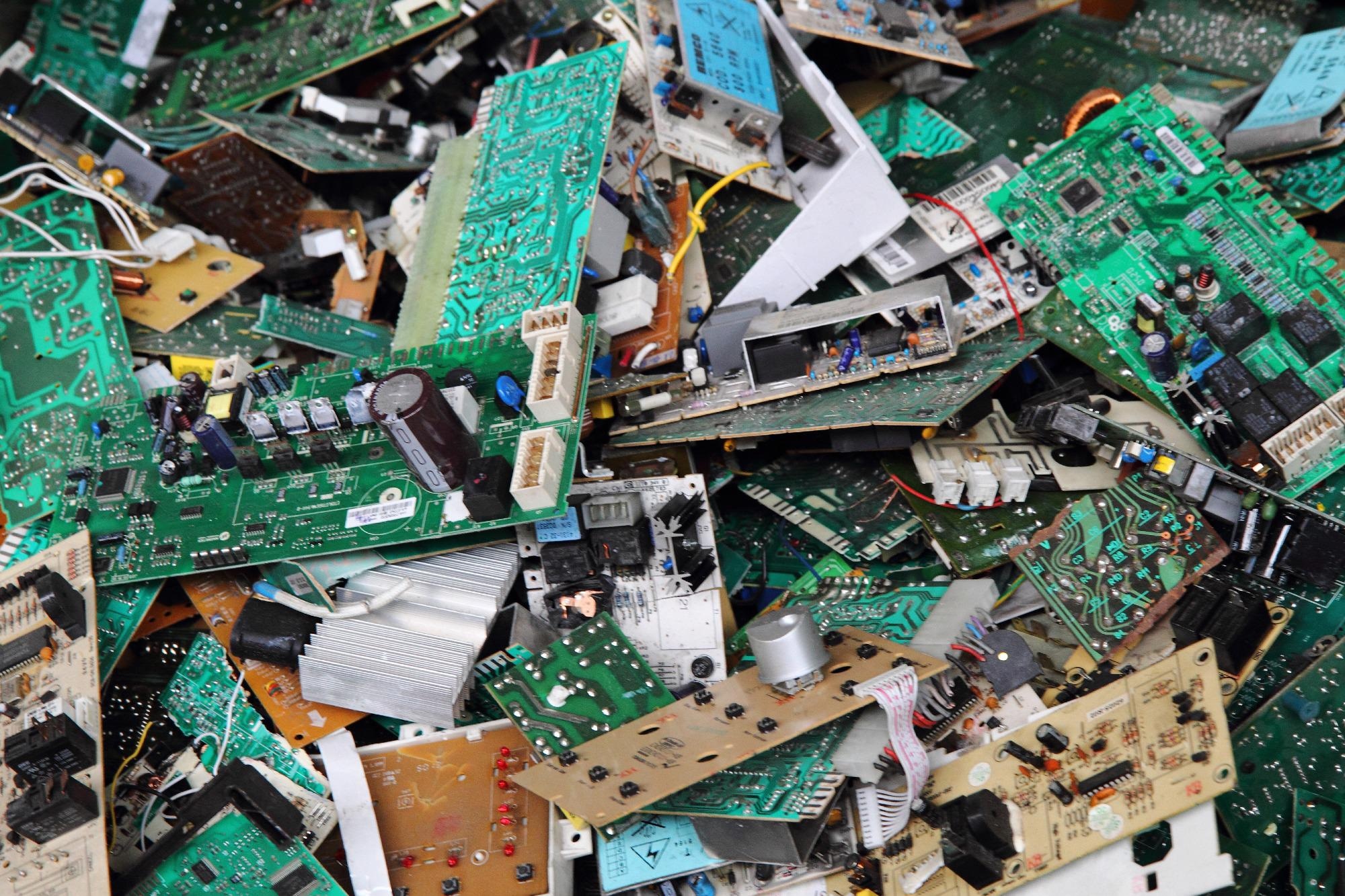Electronic waste is a growing problem, with challenges in recycling and recovering the resources in electronic components, especially printed circuit boards, making it difficult to handle waste at the end of a component’s life cycle. To provide a comprehensive critical review on recycling and recovery strategies for printed circuit boards, a paper has been published in Resources, Conservation & Recycling.

Study: A comprehensive review on the recycling of discarded printed circuit boards for resource recovery. Image Credit: Jirik V/Shutterstock.com
The Scale of Electronic and Electronic Equipment Waste
The scale of electronic and electronic equipment waste is staggering. Globally, 53.6 million tons was generated in 2019, with projections putting it at 74.7 million tons by 2030, with Asia producing 50% of this waste, followed by America and Europe. In India, the third-largest national generator of electronic waste, only 1-2% of recycled and collected electronic waste is documented, with no separation between it and municipal waste. This leads to the majority being illegally dumped or burned.
The rise in global electronic waste is driven by technological advances and needs. Rapid miniaturization, shortened life cycles, value, and the affordability of upgraded devices all contribute to the problem.
Landfilling is the most common method of electronic parts disposal, leading to environmental damage from toxic and bio-accumulative pollution. Common electronic waste pollutants include persistent organic pollutants such as polychlorinated biphenyls, polybrominated biphenyls, and heavy metals.
The Economic Importance of Electronic Waste Recycling
Electronic components contain several economically important materials. These include base metals such as zinc, lead, copper, and nickel, special metals such as selenium and indium, rare earth elements such as yttrium and lanthanum, as well as precious metals such as gold and silver.
The economic importance of recycling and recovery is significant. Mining these resources is estimated to cost 7x the cost of printed circuit board recovery for the same amount of recovered resources. One ton of discarded mobile phones without batteries yields significantly higher levels of important metals such as gold, nickel, lead, and copper than natural ores. Estimates show that recovering gold from mobile phones can satisfy 10% of the total global demand for this precious metal.
Recycling Printed Circuit Board Waste
Printed circuit boards make up a higher percentage of electronic waste than their weight (4.7% of the mass of all waste, compared to 0.01-1% by weight) and precious metal content makes up 90% of the intrinsic value of printed circuit boards. Printed circuit boards are classified as low, medium, and high grades based on their gold content.
Recycling printed circuit boards reduce carbon emissions and avoid the extraction of dwindling resources, as well as being less environmentally damaging than traditional mining methods. Therefore, recycling these electronic components and reusing the metals they contain is of crucial importance to the sustainability of the electronics industry.
How Can We Fix The Massive E-Waste Problem?
Video Credit: CNBC/Youtube.com
Current methods for recycling printed circuit board waste include pyrometallurgical, hydrometallurgical, physical, and combined techniques. Currently, pyrometallurgical processes are favored on the commercial scale. Pre-treatments are used to upgrade the efficiency of extraction methods and significant focus has been placed recently on novel pre-treatment and hybrid-thermal-chemical route combination methods to improve extraction and recovery processes.
Recently, selective recovery of high-purity contents from a multi-elemental leach solution has been investigated for their potential as recycling and recovery processes. These processes include ion exchange, adsorption, precipitation, and solvent extraction.
Reviewing Printed Circuit Board Recycling and Resource Recovery
According to the review published in Resources, Conservation & Recycling, there have been many studies that have selectively focused on specific extraction and recovery processes, but to date, there has been no comprehensive review on the field. Additionally, few have concentrated on a holistic recycling process, and no studies have described the recycling of printed circuit board electronic components and the value-added generation of end products.
The review has attempted to delineate sequential processing routes as well as dissolution and purification methods used in electronic waste recycling. Additionally, commercial recycling processes, recent advances, and non-conventional recycling methods were investigated and discussed, along with suitable post-treatment processes. Furthermore, a comprehensive review of recycling methods for different components of printed circuit boards such as integrated circuits was presented.
Moreover, producing value-added end-products from printed circuit boards was discussed. Finally, a flowsheet for the recovery of the printed circuit board and component resources was proposed by the research team. Therefore, a complete and comprehensive critical review was presented that provides an important knowledge base for the electronics industry.
The Future
As the demand for electronic products increases globally, the recovery of electronic components from waste to yield economically important resources and reduce carbon emissions is a priority for the electronics industry. The review in Resources, Conservation & Recycling will undoubtedly help inform future recycling and reuse strategies.
Using Acid Leaching to Recover Metals from Circuit Board Waste
Reference
Mir, S & Dhawan, N (2021) A comprehensive review on the recycling of discarded printed circuit boards for resource recovery [online] Resources, Conservation and Recycling 178A| sciencedirect.com. Available at: https://www.sciencedirect.com/science/article/abs/pii/S0921344921006352
Disclaimer: The views expressed here are those of the author expressed in their private capacity and do not necessarily represent the views of AZoM.com Limited T/A AZoNetwork the owner and operator of this website. This disclaimer forms part of the Terms and conditions of use of this website.